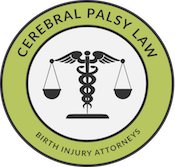What is Bacterial Vaginosis (BV)?
Bacterial vaginosis is a bacterial infection in the vagina caused by an imbalance of the naturally occurring bacteria in a woman’s body. BV is the most common vaginal infection in women during their childbearing years, affecting approximately one in five women at some point during pregnancy. Left untreated, bacterial vaginosis may cause premature rupture of the membranes (PROM), preterm birth, cerebral palsy (CP), brain damage, fetal death and, according to some studies, miscarriage in the second trimester.
Do you believe your loved one’s injuries or disabilities are the result of undiagnosed or untreated bacterial vaginosis? If so, we urge you to contact on of our experienced Michigan cerebral palsy lawyers today for a free case evaluation. Contact Michigan Cerebral Palsy Attorneys in one of the following ways and a member from our birth injury legal team will inform you of your legal options.
Call our Michigan birth injury lawyers toll-free at (888) 592-1857
Complete this online contact form
Live Chat with our attorneys by pressing the Live Chat tab to your screen’s left
What Causes Bacterial Vaginosis?
Certain natural microorganisms in the vagina prevent other microorganisms from multiplying—Lactobacilli is one of these important types of bacteria. When bacterial vaginosis develops, changes in the normal bacterial makeup of the vagina occur. Important bacteria like Lactobacilli reduce in numbers and more resistant bacteria begin to multiply and dominate the woman’s normal bacterial flora. Although the exact causes for BV are unknown, researchers believe that antibiotics and pH imbalances cause a woman’s vaginal bacteria to lose its balance.
What Are the Risk Factors for Bacterial Vaginosis?
- Douching
- Antibiotics, which can reduce Lactobacilli bacteria
- Sexual intercourse, new sex partners, or multiple sex partners
- History of BV
What Are the Injuries Associated with BV?
Due to the potentially devastating complications associated with bacterial vaginosis, physicians are obligated to treat all pregnant women. The following injuries may result from untreated bacterial vaginosis:
- Pelvic inflammatory disease (PID): Infection from bacterial vaginosis may damage a woman’s reproductive organs, occasionally resulting in infertility.
- Premature rupture of the membranes (PROM): BV can cause a woman’s amniotic sac to break open early, resulting in preterm birth (and its associated dangers), transmission of infection to the fetus, and more.
- Preterm birth
- Cerebral palsy
- Low birth weight
- Perinatal death
What Are the Signs and Symptoms of Bacterial Vaginosis?
The chief symptom of BV is vaginal discharge, but other signs and symptoms of bacterial vaginosis include the following:
- An abnormally homogenous, milky, or creamy discharge.
- Fishy odor
- Mild itching
How Is BV Diagnosed?
Physicians must test women with symptoms of bacterial vaginosis—in fact, some specialists screen for BV in all women with a history of preterm birth during the first prenatal visit.
For diagnosis of BV, the presence of 3 of these 4 criteria is necessary:
- Homogenous, milky or creamy discharge
- Presence of true clue cells on a microscopic exam
- pH secretions above 4.5
- Fishy odor
How Is Bacterial Vaginosis Treated?
If bacterial vaginosis is present, the physician should carefully choose an antibiotic regimen. Many doctors prescribe either:
- Metronidazole: Single doses of this antibiotic often result in resistance and the recurrence of BV, so doctors either opt for multiple doses or for a different treatment.
- Clindamycin: Inserted vaginally, this antibiotic cream is often more clinically effective in treating bacterial vaginosis than Metronidazole . It should only be used in pregnant women during the first twenty gestational weeks.
Legal Help for Bacterial Vaginosis and Cerebral Palsy
Severe complications result from the failure to diagnose and treat bacterial vaginosis. Failure to treat bacterial vaginosis in a pregnant woman is considered negligence, and it is considered medical malpractice if the negligence leads to injury.
The following circumstances constitute negligence:
- Failure to perform a BV screening on a woman who has symptoms of bacterial vaginosis
- Failure to perform a recurrence test after treating bacterial vaginosis
- Failure to use appropriate antibiotics
- Failure to monitor the effects of the chosen antibiotic regimen and switch to different antibiotics if necessary
- Use of antibiotics that are harmful to the mother or fetus
Our skilled attorneys have specifically worked with cerebral palsy and birth injury cases for decades. Don’t hesitate to call our experienced Michigan cerebral palsy attorneys at (888) 592-1857 to determine if you are eligible for compensation.
Sources:
- Joesoef, M, Schmid, G. Bacterial vaginosis. In: Clinical evidence, BMJ Publishing Group, London 2001. p.887.
- Morris M, Nicoll A, Simms I, et al. Bacterial vaginosis: a public health review. BJOG 2001; 108:439.
- Tolosa JE, Chaithongwongwatthana S, Daly S, et al. The International Infections in Pregnancy (IIP) study: variations in the prevalence of bacterial vaginosis and distribution of morphotypes in vaginal smears among pregnant women. Am J Obstet Gynecol 2006; 195:1198.
- Allsworth JE, Peipert JF. Prevalence of bacterial vaginosis: 2001-2004 National Health and Nutrition Examination Survey data. Obstet Gynecol 2007; 109:114.
- Hill GB. The microbiology of bacterial vaginosis. Am J Obstet Gynecol 1993; 169:450.
- Ling Z, Kong J, Liu F, et al. Molecular analysis of the diversity of vaginal microbiota associated with bacterial vaginosis. BMC Genomics 2010; 11:488.
- Eschenbach DA, Davick PR, Williams BL, et al. Prevalence of hydrogen peroxide-producing Lactobacillus species in normal women and women with bacterial vaginosis. J Clin Microbiol 1989; 27:251.
